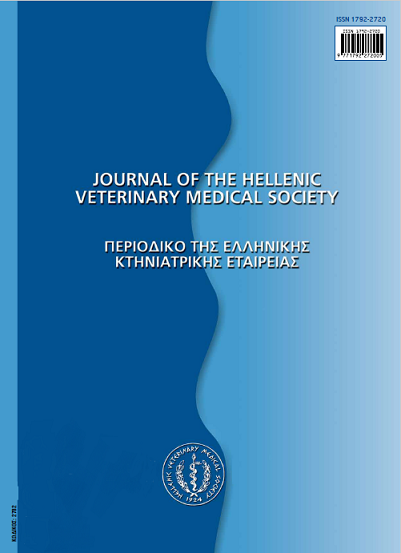The effects of four protocols for the treatment of retained placenta on reproduction performance and milk yield in Holstein cows
Résumé
In a first study, 231 cows with retained placenta (RP) were assigned to four groups and their reproductive performance after treatment was studied. Group 1 received 2.0 mg/kg ceftiofur hydrochloride (CH), 10 mg estradiol cypionate (ECP) and 100 IU oxytocin for three consecutive days (CEO-3; n= 63). Group 2 received the same treatment for six consecutive days (CEO-6; n= 48). Group 3 was treated with CH and oxytocin for three consecutive days (CO-3; n= 68). Group 4 was subjected to the previous treatment for six consecutive days (CO-6; n=52). The control group (n= 62) did not present RP. Conception rates (CR) did not differ between treatments with values of 36.5, 25.0, 30.9, 30.8 and 33.9% for CEO-3, CEO-6, CO-3, CO-6 and control group, respectively. Services per pregnancy did not differ between groups (overall 3.6 ± 2.0; mean ± SD). In a second study, changes in milk production associated with RP were examined in cows receiving the CO-3 protocol. Data came from 360 cows with RP and 1623 served as controls. Mean 305-d milk yield was 283 ± 43 kg lower (P<0.05) in cows with RP compared to controls. It was concluded that either prolonged (6-d) or short (3-d) application of CH in combination with oxytocin and ECP were equally effective in preventing a reduction of the reproductive performance in cows suffering RP. Additionally, RP was associated with a 3% decrease in 305-d milk production.
Article Details
- Comment citer
-
MELLADO, M., SOLANO, R., VELIZ, F. G., DE SANTIAGO, A., GAYTAN, L., & GARCIA, J. E. (2018). The effects of four protocols for the treatment of retained placenta on reproduction performance and milk yield in Holstein cows. Journal of the Hellenic Veterinary Medical Society, 68(4), 513–520. https://doi.org/10.12681/jhvms.16030
- Numéro
- Vol. 68 No 4 (2017)
- Rubrique
- Research Articles

Ce travail est disponible sous licence Creative Commons Attribution - Pas d’Utilisation Commerciale 4.0 International.
Authors who publish with this journal agree to the following terms:
· Authors retain copyright and grant the journal right of first publication with the work simultaneously licensed under a Creative Commons Attribution Non-Commercial License that allows others to share the work with an acknowledgement of the work's authorship and initial publication in this journal.
· Authors are able to enter into separate, additional contractual arrangements for the non-exclusive distribution of the journal's published version of the work (e.g. post it to an institutional repository or publish it in a book), with an acknowledgement of its initial publication in this journal.
· Authors are permitted and encouraged to post their work online (preferably in institutional repositories or on their website) prior to and during the submission process, as it can lead to productive exchanges, as well as earlier and greater citation of published work.




